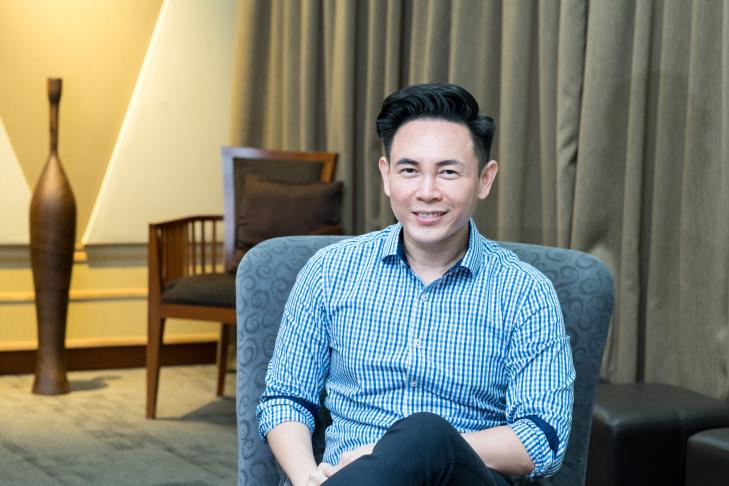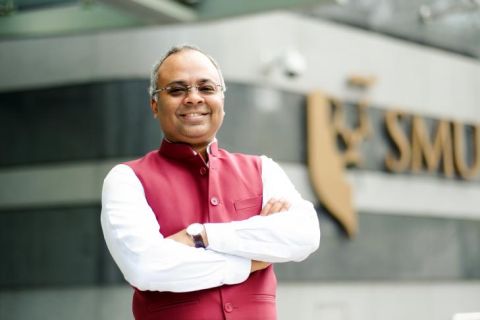
Research by SMU Associate Professor Roy Chua is uncovering cultural obstacles to creativity and globally successful innovation.

Photo Credit: Cyril Ng
By David Turner
SMU Office of Research – Disruption, the messy yet vital sidekick of creativity, unsticks social assumptions and conventions to create space for new ideas. So what happens when a culture stubbornly clings to the status quo?
The influence of culture on the creative process fascinated Roy Chua, Associate Professor of Organisational Behaviour and Human Resources at the Singapore Management University (SMU) Lee Kong Chian School of Business, during his 11 years studying at Columbia University and teaching at Harvard University in the United States (US).
As a Singaporean living in America, he began to think about how the two very different cultures influenced their people’s creativity. “If you look around, the big innovations today still mostly originate from the West, so I became interested in the idea of whether Asian culture helps creativity,” he says.
Since then Professor Chua has researched extensively about creativity and culture. His paper, The costs of ambient cultural disharmony: Indirect intercultural conflicts in social environment undermine creativity, which won the 2013 Best Paper of the Academy of Management Journal, examined how intercultural tensions in social environments impede creativity by making it difficult for people to connect ideas from disparate cultures. His more recent research looks at how societal norms in different countries influence their people’s creative motivation and performance.
Insights from an online creative crowdsourcing venture
Creativity and culture are both difficult concepts to measure and analyse, but it was the ‘wisdom of the crowd’ that gave Professor Chua the data source for his research on the relationship between the two. He achieved this with the help of a doctoral student who worked for an online crowdsourcing venture that invites people from around the world to participate in creative problem-solving competitions.
Information about the people who enter the competitions gives an interesting way to measure and compare creative motivation and success internationally, says Professor Chua. “All over the world, people choose to enter a given creative challenge showing their motivation to take a risk and be creative. Then they must do the work – an ad campaign or a video. If they win, that indicates creative success,” he explains.
The data proved to be ideal for his new research area and formed the basis of his paper, The Impact of Culture on Creativity: How Cultural Tightness and Cultural Distance Affect Global Innovation Crowdsourcing Work, published in the journal Administrative Science Quarterly.
Creativity as a function of cultural tightness
Professor Chua used this data to test the relationship between creativity and ‘cultural tightness’, a measure of a culture’s tolerance and openness to behaviours and ideas that deviate from the local norms, developed by Michele J. Gelfand, Professor of Psychology at the University of Maryland.
Previous studies found that many Asian countries—Singapore, China, South Korea—tend to be culturally tight. This could be due to their homogenous societies or government policies, he suggests.
By analysing creative motivation and cultural tightness, Professor Chua assessed the likelihood that a person from a culture, for example Singapore, would engage in a creativity challenge in another culture, such as the US, and whether their culture influenced their chances of creative success. “We found that people from tight cultures were less likely to attempt creative challenges in foreign cultures. If they did try, they were less likely to succeed.”
The findings also suggested that people from tight cultures are more likely to enter and win creative challenges within their own country. On the flipside, people from culturally loose societies are more likely to achieve creative success in foreign cultures than people from tight cultures. “Innovation is in some ways a social construct—a great idea won’t sell unless the people accept it. So in culturally tight societies, it takes an insider to create something that the market wants,” he notes.
A fear of making mistakes
Professor Chua’s research also proposes that tight cultures tend to make people more risk-averse. He suggests that culturally tight societies are more likely to adapt existing ideas or products than to risk creating something revolutionary. “People in culturally tight societies are more focused on prevention—they don’t want to make a mistake and be punished for it,” he says.
While he agrees that creativity has many ingredients such as economic development, he laments that efforts to boost creativity often overlook the cultural element. Professor Chua notes that the governments of China and Singapore have pumped money into research institutes and the hiring of top talent, but he believes there has been insufficient attention devoted to the influence of the tight cultures. “We have great people and facilities but they are still operating in a tight culture that impedes creativity,” he explains.
Contrasting the experience of Singapore and China with the US, Professor Chua observes that in the US, innovation seems to come from those who do not have much money but are open to new ideas and dare to challenge the norm. “From the outside, the US government looks dysfunctional, the economy looks anaemic, yet people are still optimistic because the Americans are inventive. It shows that if the culture is right, innovation can come from anywhere.”
His next research target: China
China is Professor Chua’s next big research target. While the world’s most populated country is regarded as culturally tight, Professor Chua is excited about the promise of comparability provided by its sheer size and regional differences. He plans to map cultural tightness across different provinces and measure how the differences influence the rate of patenting, which is a measure of creativity.
Professor Chua also has some ideas for policy makers searching for ways to promote creativity in tight cultures. He points to three possible starting points, “The first and most direct solution is to loosen up and relax the rules. At a deeper level, the second is to question how to harness multi-culturalism for a creativity advantage. Thirdly, we need to encourage creative abrasion—in Asia, people generally don’t like conflicts, but if done right it can generate creative ideas more productively.”
See More News
Want to see more of SMU Research?
Sign up for Research@SMU e-newslettter to know more about our research and research-related events!
If you would like to remove yourself from all our mailing list, please visit https://eservices.smu.edu.sg/internet/DNC/Default.aspx

